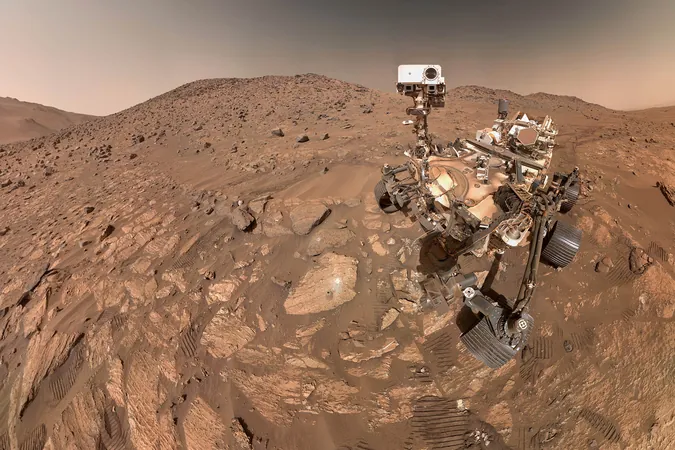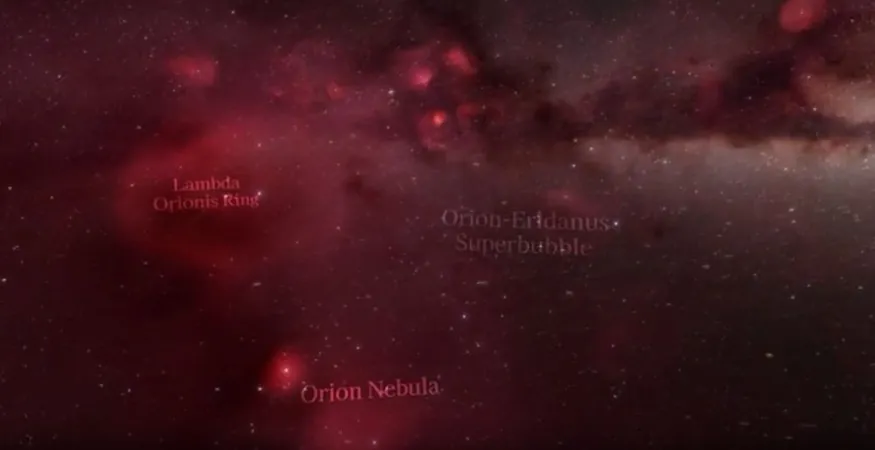
Could Mars Hold the Key to Alien Life? NASA's Groundbreaking Discoveries Spark Theories!
2025-09-14
Author: Amelia
Is there life on Mars? NASA’s recent findings are stirring up excitement among scientists and space enthusiasts alike, asking the ultimate question posed by David Bowie. Last week marked a monumental moment in Martian exploration, as the Perseverance rover transmitted images revealing intriguing spots on the planet's rocky surface.
These mysterious formations are believed to be potential biosignatures, suggesting that microbial life could have existed there in the past. Astrobiologists are buzzing with anticipation, yet they're exercising caution while further research is pursued to rule out geological origins for these spots.
The Age-Old Question: Are We Alone in the Universe?
The quest for extraterrestrial life dates back centuries, with visions of alien civilizations sketched in literature as early as the 2nd century. However, Mars is a prime candidate in this search, owing to its Earth-like qualities and historical signs of water, including lakes and river deltas.
Unlike Earth, which is shielded by a global magnetic field, Mars lost this protective barrier eons ago, exposing its surface to harsh solar radiation. This deepens the mystery of what story Mars might tell about life’s existence.
Mars: A Time Capsule of Life?
"It’s like a mummified Earth," stated Joel Hurowitz, an associate professor at Stony Brook University and member of the Perseverance team. He emphasized the parallel between early Earth, which thrived with microbial life for billions of years, and the preserved remnants that could still be found on Mars.
While Earth's tectonic activity has largely eroded geological evidence of early life, Mars, with its barren landscapes, may retain these crucial clues, offering insights into the origins of life itself.
Perseverance: The Martian Detective
For nearly four years, the Perseverance rover has been navigating the ancient Jezero crater, analyzing rocks, and collecting samples that could one day return to Earth. The rover has identified riverbed sediment and clay in the area, precisely where signs of ancient microbial life might accumulate.
"It’s all about the samples coming back, fundamentally," explained Prof. Sanjeev Gupta from Imperial College London, another key figure in the mission. "Unless we see a clear fossil, we can only speculate about life here. We need those samples back to analyze them thoroughly!"
The Journey to Earth: What’s Next?
However, budget cuts from the Trump administration have left the timeline for sample return uncertain. Sean Duffy, NASA’s acting head, expressed optimism about future missions to retrieve these samples. Yet, even if we obtain them, will they truly reveal the secrets of Mars?
As Pamela Knoll, a postdoc at the University of Edinburgh, pointed out, without distinct fossils or clear biological markers, discerning whether the features found on Mars are truly remnants of life remains a complex challenge.
The Resilience of Life: A Glimpse Beyond Earth
Life on Earth is incredibly resilient. In 1988, astronauts discovered fungus thriving on the Mir space station, enduring the vacuum and radiation of space. As Perseverance scans Mars, scientists are rigorously ensuring that our rover remains uncontaminated, steering clear of any chance of Earthly microbes hitching a ride.
"Fungus can be quite tenacious," Knoll remarked. "You think you’ve found a lifeless area, and somehow, life finds a way!" Now, as we venture further into exploring our celestial neighbors, we’ve stumbled upon what may be our best lead yet for alien life.
If NASA can successfully return samples from Mars, we stand on the brink of potentially understanding not just the origins of life on Earth, but whether we are sharing our universe with others. Even if conclusive evidence remains elusive, humanity's quest for knowledge about life beyond Earth is far from over!









 Brasil (PT)
Brasil (PT)
 Canada (EN)
Canada (EN)
 Chile (ES)
Chile (ES)
 Česko (CS)
Česko (CS)
 대한민국 (KO)
대한민국 (KO)
 España (ES)
España (ES)
 France (FR)
France (FR)
 Hong Kong (EN)
Hong Kong (EN)
 Italia (IT)
Italia (IT)
 日本 (JA)
日本 (JA)
 Magyarország (HU)
Magyarország (HU)
 Norge (NO)
Norge (NO)
 Polska (PL)
Polska (PL)
 Schweiz (DE)
Schweiz (DE)
 Singapore (EN)
Singapore (EN)
 Sverige (SV)
Sverige (SV)
 Suomi (FI)
Suomi (FI)
 Türkiye (TR)
Türkiye (TR)
 الإمارات العربية المتحدة (AR)
الإمارات العربية المتحدة (AR)